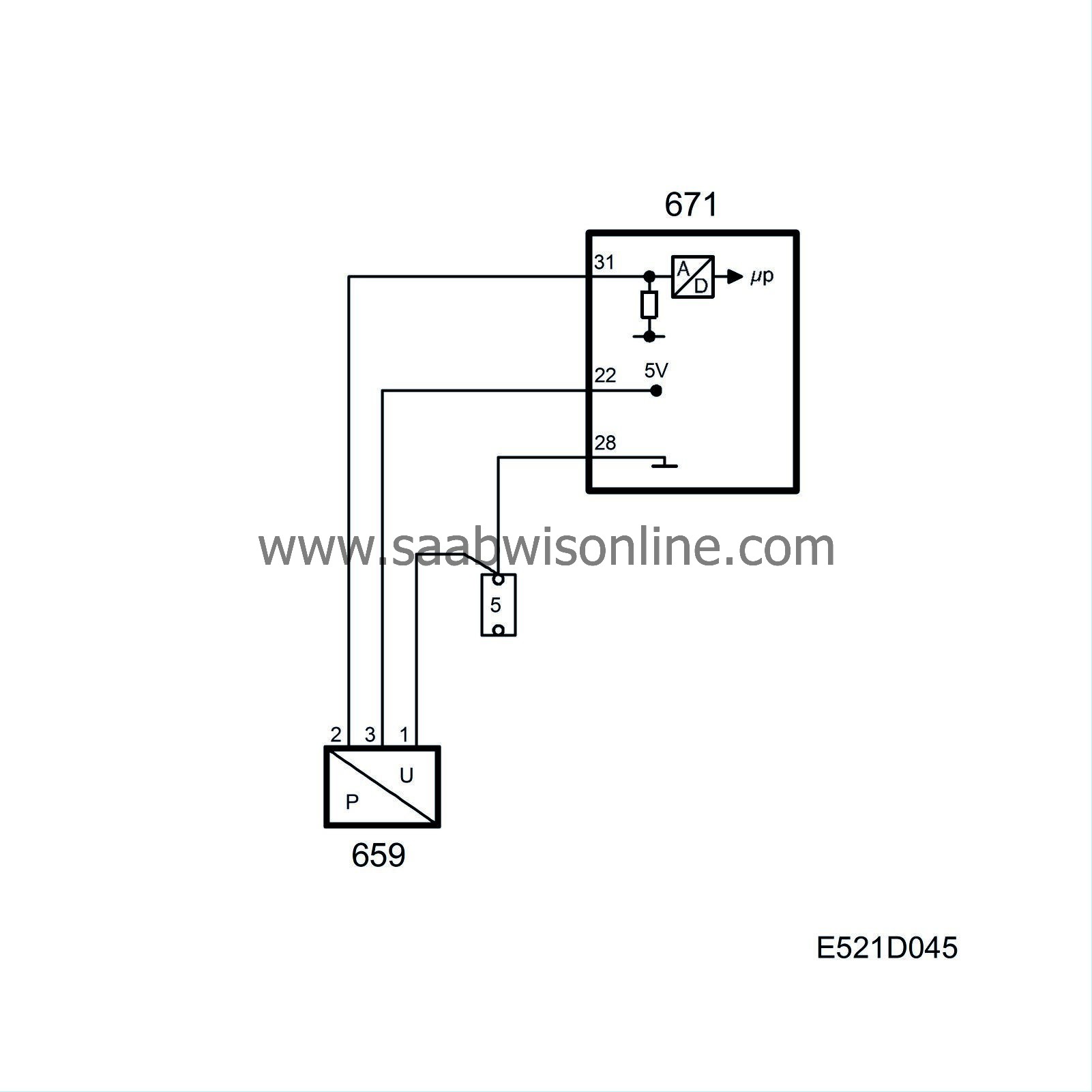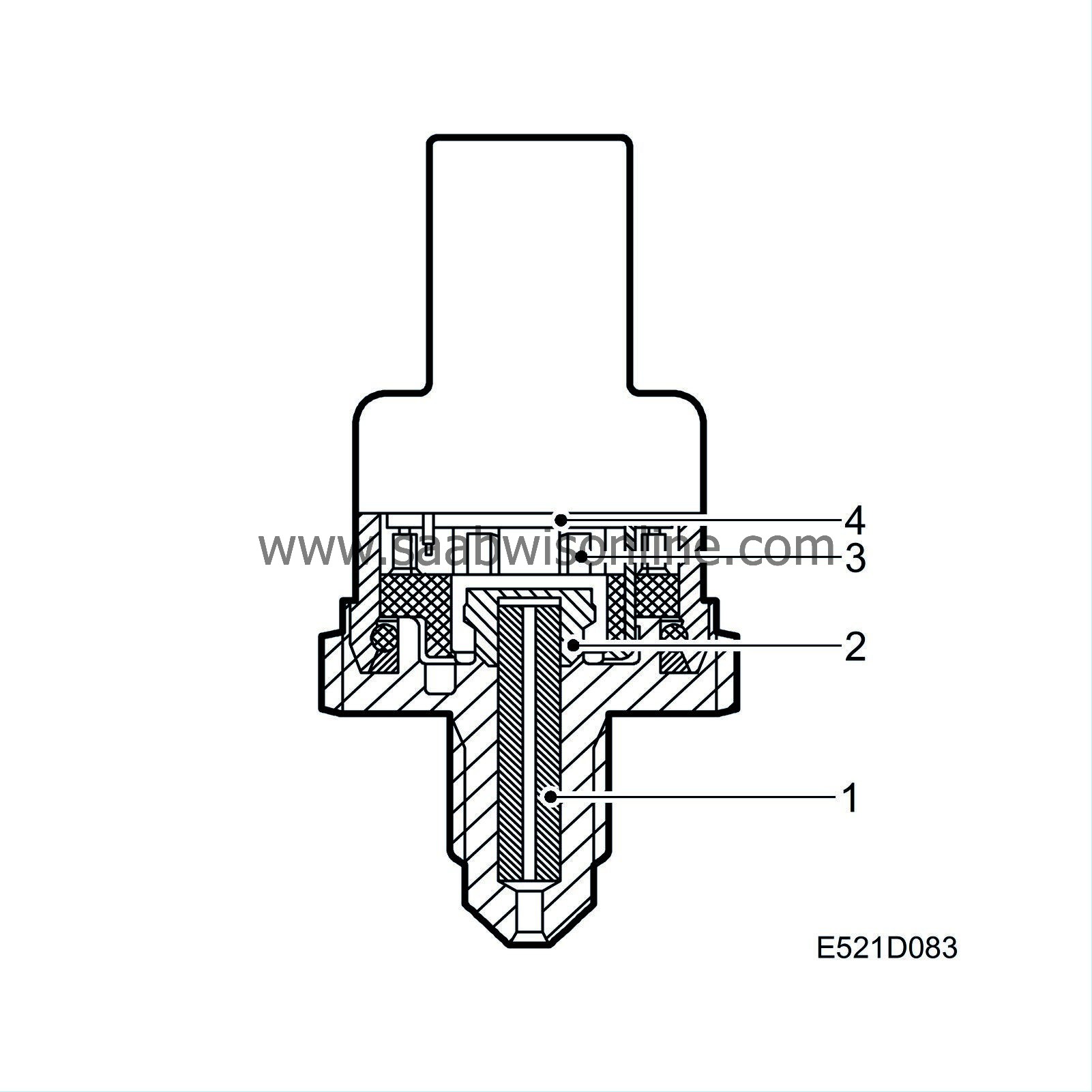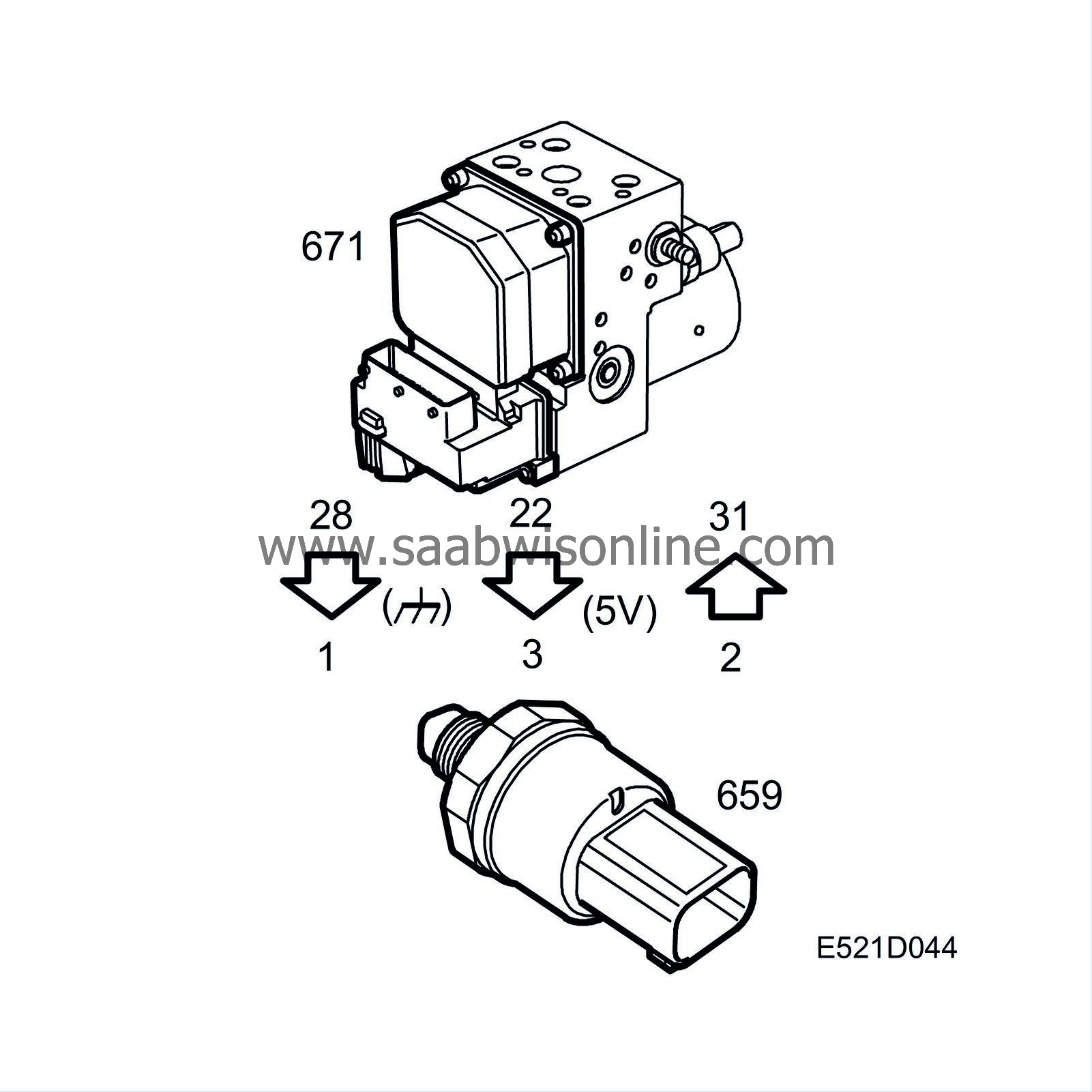Brake pressure sensor
| Brake pressure sensor |
The pressure sensor consists of a membrane and a piezoelectric crystal.

| Pin | Test reading | Description |
|
1
|
|
System ground
|
|
2
|
0-5 V, equivalent to 0-250 bar
|
Output signal
|
|
3
|
+5 V
|
Power supply from control module
|
| Function |

When the driver depresses the brake pedal, the brake fluid is forced into the pressure duct (1). The steel membrane (2) is depressed and acts on a piezoelectric unit (3). The distribution of charge in the piezoelectric unit thus changes. This signal is amplified in the electric circuit (4) and sent to the ESP system.
| Diagnostics |
In the event of a faulty signal from the pressure sensor, a short circuit or open circuit a DTC is generated in the ESP control module. The following warning lamps come on: ABS, foot brake, ESP OFF and central warning lamp.



